Del 1 al 12 de Junio
EXPOSICIÓN PESADILLAS ICÓNICAS @ FILMADRID
En su segunda edición FILMADRID expande su mirada hacia el mundo del arte con la exposición Pesadillas icónicas, comisariada por el equipo del festival. La exposición reúne obras audiovisuales de cinco artistas cuyo nexo común es el rastro dejado por figuras españolas que ostentaron el poder en España o en los territorios colonizados por los españoles.
Monarcas, gobernantes, invasores… Todos ellos generaron e impulsaron un imaginario de fuerte carga personalista, a menudo de tintes autoritarios, que pervive todavía en nuestros días. La historia del arte, los archivos fotográficos y televisivos, pero también los propios espacios públicos y aspectos culturales más profundos, conservan la imagen y el carácter de esas figuras. De Perú y México a Filipinas, pasando obviamente por España, el objetivo de la exposición es ofrecer un recorrido personal por esos vestigios iconográficos, marcado por las inquietudes artísticas de cada uno de los creadores invitados.
Todas las obras son inéditas y la mayoría han sido creadas expresamente para esta exposición. Los artistas invitados son: Lyric De La Cruz (Filipinas), Robinson Díaz (Perú), Luis E. Parés (España), Los Ingrávidos (México) y Pablo Useros (España).
EXHIBITION ICONIC NIGHTMARES @ FILMADRID
In its second edition, FILMADRID goes further into the world of art with the exhibition Iconic Nightmares, curated by the festival team. It features audiovisual works by five artists whose common ground is built upon the traces left by significant Spanish figures that, either in the peninsula or in the former Spanish colonies, once held power.
Monarchs, rulers, invaders… All of them built and fostered an imaginarium heavily charged with self-regard, often with authoritarian undertones, that lives on nowadays. The art history, photo and television archives, as well as the public spaces and the deepest cultural aspects, preserve the image and character of those figures. From Peru and Mexico to Philippines, and obviously passing through Spain, the aim of the exhibition is to offer a personal tour, marked by the artistic restlessness of each of our guest creators, around those iconographic remains.
Every piece of art is being exhibited here for the first time and most of them have been expressly created for this occasion. The guest artists are: Lyric De La Cruz (Philippines), Robinson Díaz (Peru), Luis E. Parés (Spain), Los Ingrávidos (Mexico) y Pablo Useros (Spain).
//////////////////////////////////////////////////////////////////////////////////////////
The Search for the Memories of the Beginning
Ang Paghahanap sa Alaala ng Simula
Liryc Dela Cruz – Filipinas
 Ang Paghahanap sa Alaala ng Simula (The Search for the Memories of the Beginning) es una representación multimedia donde la “pesadilla” se proyecta en una superficie y el “sueño” se desarrolla en una performance en directo. Este trabajo es un sueño dentro de una pesadilla, es un análisis del contexto histórico y folclórico de la constante búsqueda por fragmentos de recuerdos de la identidad autóctona y perdida de los primeros filipinos que vivieron los años oscuros de la colonización española de Filipinas. La obra transmite la idea de buscar la verdad y lo olvidado, cuyo eco resuena todavía en el presente: la pesadilla se reinventa y se proyecta, mientras el sueño aún está presente. Esta instalación constituirá un esfuerzo continuo, ya que la representación se grabará a tiempo real una y otra vez para ser parte esencial de las siguientes exhibiciones. La grabación continua de cada representación será la mejor encarnación de todo el proyecto. Además, la ejecución final de todas las capas repetidas pone de manifiesto la necesidad de resurrección de la identidad perdida con respecto a la verdad y la memoria, un recordatorio de que la propia naturaleza del tiempo nos va distanciando de la verdad y la convierte en un simple mito, en una pregunta eterna.
Ang Paghahanap sa Alaala ng Simula (The Search for the Memories of the Beginning) es una representación multimedia donde la “pesadilla” se proyecta en una superficie y el “sueño” se desarrolla en una performance en directo. Este trabajo es un sueño dentro de una pesadilla, es un análisis del contexto histórico y folclórico de la constante búsqueda por fragmentos de recuerdos de la identidad autóctona y perdida de los primeros filipinos que vivieron los años oscuros de la colonización española de Filipinas. La obra transmite la idea de buscar la verdad y lo olvidado, cuyo eco resuena todavía en el presente: la pesadilla se reinventa y se proyecta, mientras el sueño aún está presente. Esta instalación constituirá un esfuerzo continuo, ya que la representación se grabará a tiempo real una y otra vez para ser parte esencial de las siguientes exhibiciones. La grabación continua de cada representación será la mejor encarnación de todo el proyecto. Además, la ejecución final de todas las capas repetidas pone de manifiesto la necesidad de resurrección de la identidad perdida con respecto a la verdad y la memoria, un recordatorio de que la propia naturaleza del tiempo nos va distanciando de la verdad y la convierte en un simple mito, en una pregunta eterna.
LIRYC DELA CRUZ es un cineasta de Tupi, Cotabato del Sur en Mindanao, Filipinas. Representante del Land of the Dreamweavers y Pelircula/Pelikula.
 Ang Paghahanap sa Alaala ng Simula (The Search for the Memories of the Beginning) is a multimedia performance where the “nightmare” will be projected on a surface while the “dream” will be present in a form of a live performance. The work is a dream within a nightmare, an examination of the historical and folkloric context of the unending search for fragments of memories of a lost indigenous identity of the early Filipinos during the dark years of Spanish colonization in the Philippines. The installation projects the general idea of searching for truth and the forgotten, which resonates in the present times; a reimagined nightmare is projected, while the dream is present. This installation will be a continuous effort as the performance will again be filmed in real time and then be an essential part of the next exhibitions. The continual filming of each presentation will be the strongest incarnation of the whole installation. The eventual execution of all the repetitive layers is a performative manifesto of a necessary resuscitation of the lost identity of truth and memory. A reminder that the very nature of time is distancing the essential truth and fading it into a mere myth, an eternal question.
Ang Paghahanap sa Alaala ng Simula (The Search for the Memories of the Beginning) is a multimedia performance where the “nightmare” will be projected on a surface while the “dream” will be present in a form of a live performance. The work is a dream within a nightmare, an examination of the historical and folkloric context of the unending search for fragments of memories of a lost indigenous identity of the early Filipinos during the dark years of Spanish colonization in the Philippines. The installation projects the general idea of searching for truth and the forgotten, which resonates in the present times; a reimagined nightmare is projected, while the dream is present. This installation will be a continuous effort as the performance will again be filmed in real time and then be an essential part of the next exhibitions. The continual filming of each presentation will be the strongest incarnation of the whole installation. The eventual execution of all the repetitive layers is a performative manifesto of a necessary resuscitation of the lost identity of truth and memory. A reminder that the very nature of time is distancing the essential truth and fading it into a mere myth, an eternal question.
//////////////////////////////////////////////////////////////////////////////////////////
El lenguaje de los huesos en la Nueva Tenochtitlan
Los Ingrávidos – México
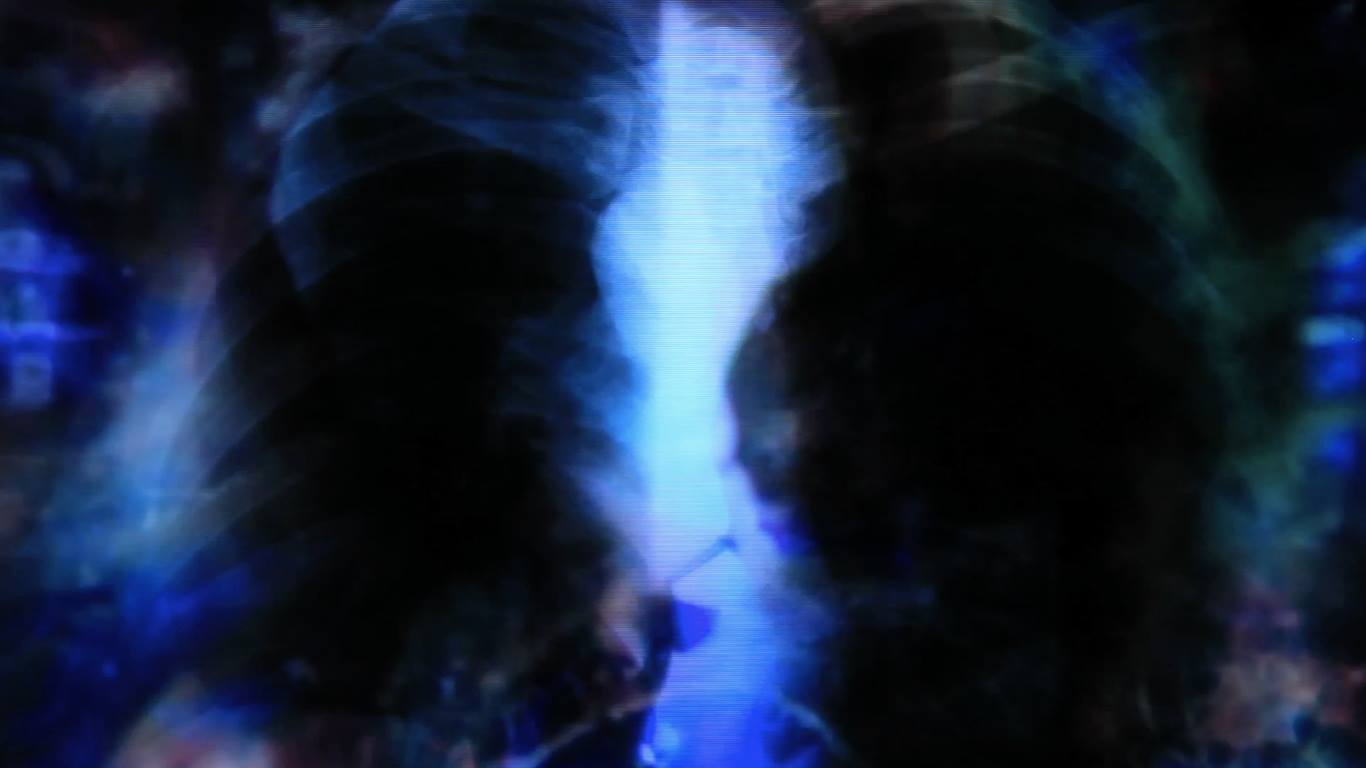 El lenguaje irradia en la materia un estado de excepción no declarado, es en los huesos y en la carne cinemática donde también es posible rastrear la historia de una auténtica política de exterminio. Tenochtitlan, fundada en 1325 y arrasada desde 1521, deja en sus huesos la penúltima evidencia de una guerra colonial de aniquilación que instaló la criminalidad en el corazón de los nacientes sistemas políticos y económicos de América que apuntalarían una continua e intermitente guerra civil molecular de todos contra todos. Las conquistas española, portuguesa e inglesa, así como el colonialismo, nunca se erradicaron, mutaron en el teatro de la crueldad que no está más en manos de los Virreyes, ominosas figuras de la soberanía continental, sino en un poder más difuso y oscuro que no termina de consolidar el terror, la desconfianza y la crueldad como gubernamentalidad de control biopolítico en la Nueva Tenochtitlan, paraíso distópico de su majestad el Capital. No podemos hablar ya sino a través de los restos, del detritus lumínico que destella y atraviesa las pantallas de la crueldad, penúltimo lenguaje válido en tiempos de guerra.
El lenguaje irradia en la materia un estado de excepción no declarado, es en los huesos y en la carne cinemática donde también es posible rastrear la historia de una auténtica política de exterminio. Tenochtitlan, fundada en 1325 y arrasada desde 1521, deja en sus huesos la penúltima evidencia de una guerra colonial de aniquilación que instaló la criminalidad en el corazón de los nacientes sistemas políticos y económicos de América que apuntalarían una continua e intermitente guerra civil molecular de todos contra todos. Las conquistas española, portuguesa e inglesa, así como el colonialismo, nunca se erradicaron, mutaron en el teatro de la crueldad que no está más en manos de los Virreyes, ominosas figuras de la soberanía continental, sino en un poder más difuso y oscuro que no termina de consolidar el terror, la desconfianza y la crueldad como gubernamentalidad de control biopolítico en la Nueva Tenochtitlan, paraíso distópico de su majestad el Capital. No podemos hablar ya sino a través de los restos, del detritus lumínico que destella y atraviesa las pantallas de la crueldad, penúltimo lenguaje válido en tiempos de guerra.
El colectivo mexicano LOS INGRÁVIDOS surge de la necesidad de desarticular la gramática audiovisual que el corporativismo estético-televisivo-cinematográfico ha utilizado y utiliza para garantizar de manera eficaz la difusión de una ideología audiovisual por medio de la cual se mantenga un continuo control social y perceptivo sobre la mayoría de la población.
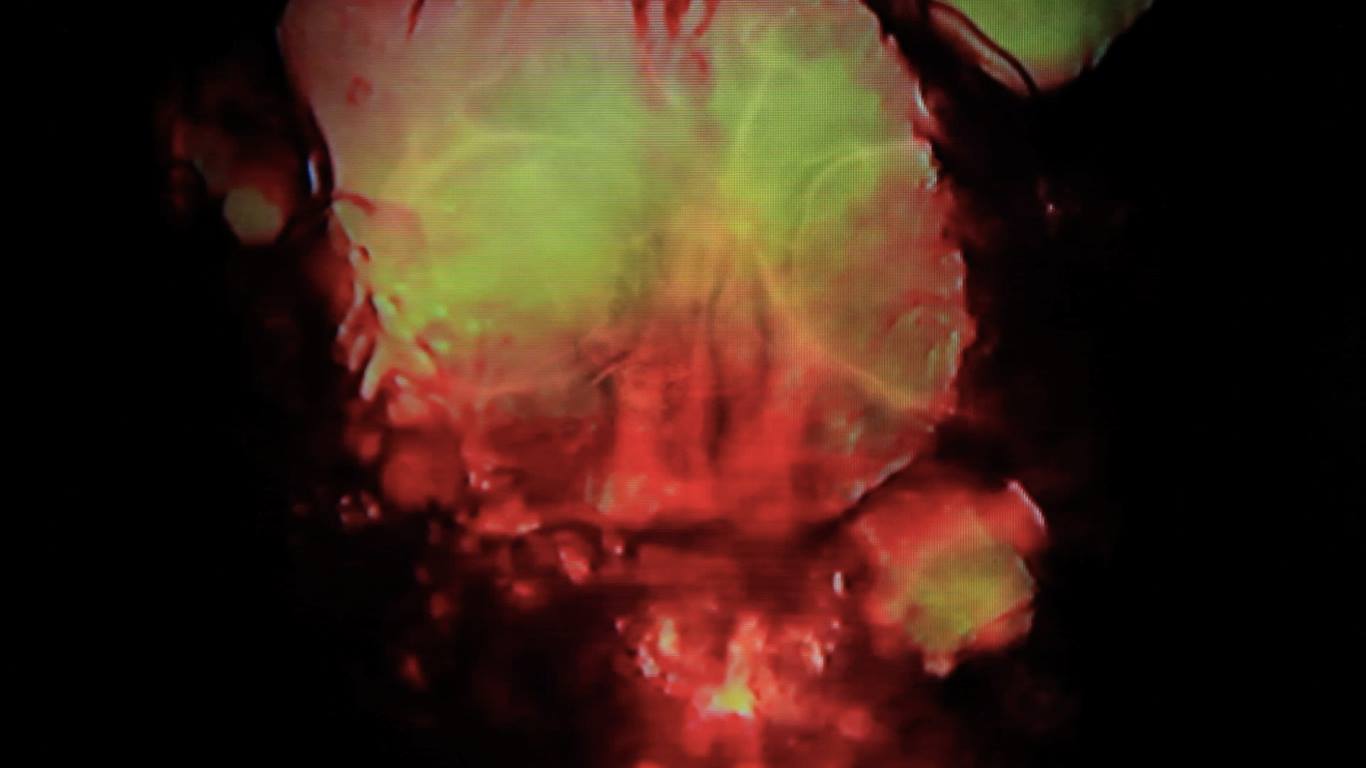 Language irradiate a non-declared state of emergency in the matter. We can trace the history of a true extermination policy through the bones and the cinematic flesh. Tenochtitlan, founded on 1325 and devastated from 1521 onwards, left in its bones the next-to-last evidence of a colonial annihilation war which brought criminality to the hearts of the rising American politic and economic systems which propped up a constant and on-off molecular civil war where everybody was against everybody. The Spanish, Portuguese and English conquers, as well as colonialism, were never eradicated, they transformed themselves in the theatre of cruelty, a cruelty Viceroys, dreadful figures of the continental sovereignty, had lost favouring a more vague and darker power which never ended consolidating terror, mistrust and cruelty as a means of biopolitical control governability in New Tenochtitlan, a distopic paradise for his majesty the Capital. We can’t talk anymore if it isn’t through the remains, through the luminous detritus that twinkles and goes through the cruelty screens, next-to-last valid language in times of war.
Language irradiate a non-declared state of emergency in the matter. We can trace the history of a true extermination policy through the bones and the cinematic flesh. Tenochtitlan, founded on 1325 and devastated from 1521 onwards, left in its bones the next-to-last evidence of a colonial annihilation war which brought criminality to the hearts of the rising American politic and economic systems which propped up a constant and on-off molecular civil war where everybody was against everybody. The Spanish, Portuguese and English conquers, as well as colonialism, were never eradicated, they transformed themselves in the theatre of cruelty, a cruelty Viceroys, dreadful figures of the continental sovereignty, had lost favouring a more vague and darker power which never ended consolidating terror, mistrust and cruelty as a means of biopolitical control governability in New Tenochtitlan, a distopic paradise for his majesty the Capital. We can’t talk anymore if it isn’t through the remains, through the luminous detritus that twinkles and goes through the cruelty screens, next-to-last valid language in times of war.
//////////////////////////////////////////////////////////////////////////////////////////
El cadáver del tiempo
Luis E. Parés – España
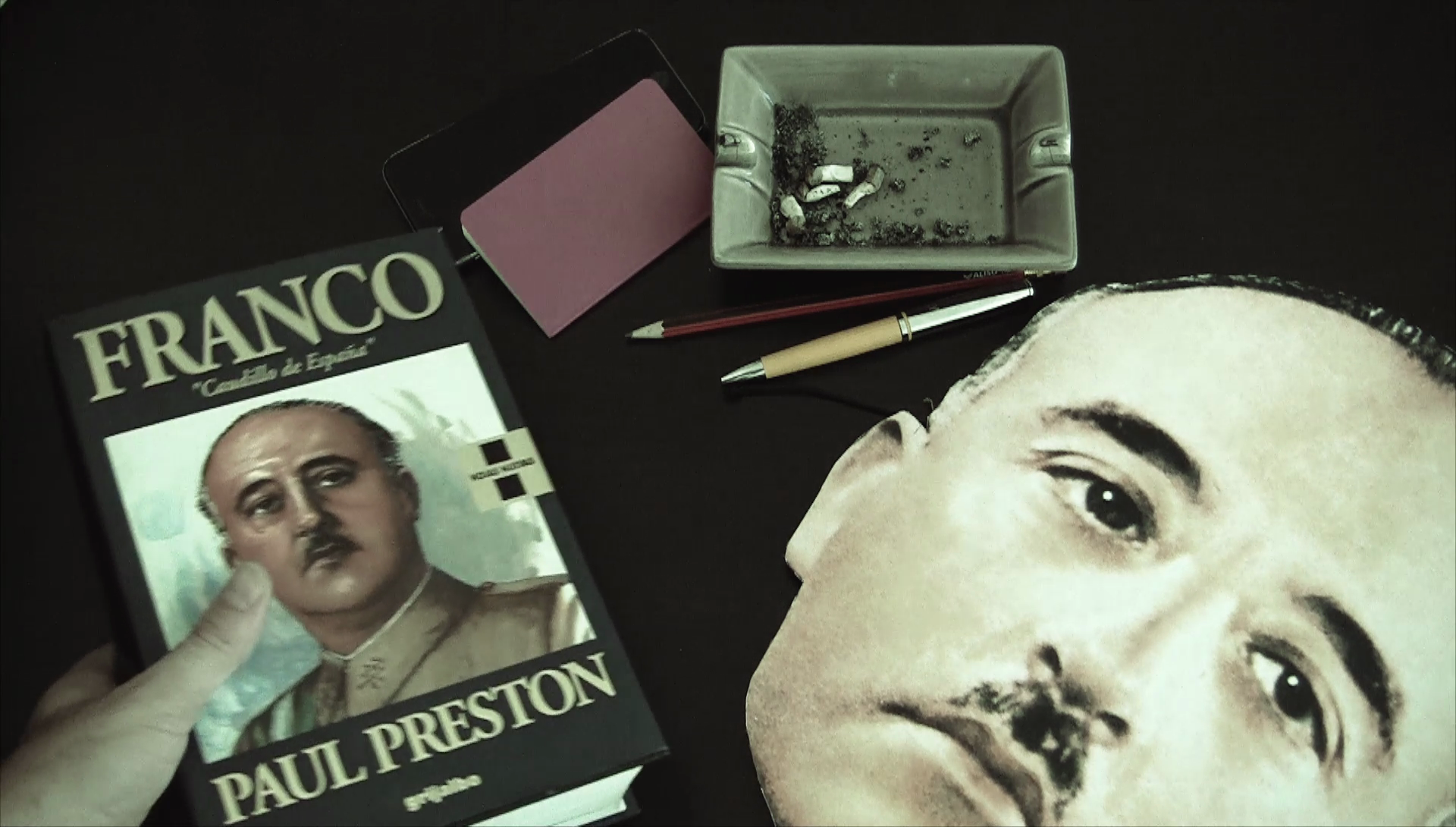 Si un dictador es su imaginario, y una dictadura el conjunto de imágenes que sobre ella existen, habrá que derribar esas imágenes para poder construir el imaginario de nuestro futuro. Si hay fantasmas que no nos pertenecen pero que aun así nos atemorizan, habrá que enfrentarse a esos fantasmas y a quienes los invocaron para respirar mejor. La mejor forma de resolver un problema es definiéndolo. Mi problema se llama Francisco Franco. Aunque parezca mentira, me paso el día entero pensando en un dictador muerto hace cuarenta años. Pero como en las películas de miedo, los malos nunca mueren del todo. Pienso, por ejemplo, que vivo en un país que desvió su camino hace 80 años y que aún no se ha dado cuenta. Y yo me siento como ese personaje de las películas de miedo que grita previniendo del peligro pero al que le han robado la voz y nadie le oye. Si nada ha cambiado, pese a todo ¿quién puede asegurarme que el tiempo que vivo es el mío y no el de cualquier otro? Empecé una comedia y he acabado una película de terror.
Si un dictador es su imaginario, y una dictadura el conjunto de imágenes que sobre ella existen, habrá que derribar esas imágenes para poder construir el imaginario de nuestro futuro. Si hay fantasmas que no nos pertenecen pero que aun así nos atemorizan, habrá que enfrentarse a esos fantasmas y a quienes los invocaron para respirar mejor. La mejor forma de resolver un problema es definiéndolo. Mi problema se llama Francisco Franco. Aunque parezca mentira, me paso el día entero pensando en un dictador muerto hace cuarenta años. Pero como en las películas de miedo, los malos nunca mueren del todo. Pienso, por ejemplo, que vivo en un país que desvió su camino hace 80 años y que aún no se ha dado cuenta. Y yo me siento como ese personaje de las películas de miedo que grita previniendo del peligro pero al que le han robado la voz y nadie le oye. Si nada ha cambiado, pese a todo ¿quién puede asegurarme que el tiempo que vivo es el mío y no el de cualquier otro? Empecé una comedia y he acabado una película de terror.
LUIS E. PARÉS es historiador y documentalista. Ha publicado los libros Notes sur l’emigration-Espagne 1960. Apunts per a una pel•licula invisible y Filmar el exilio desde Francia. El cadáver del tiempo es la tercera parte de una trilogía inconfesa.
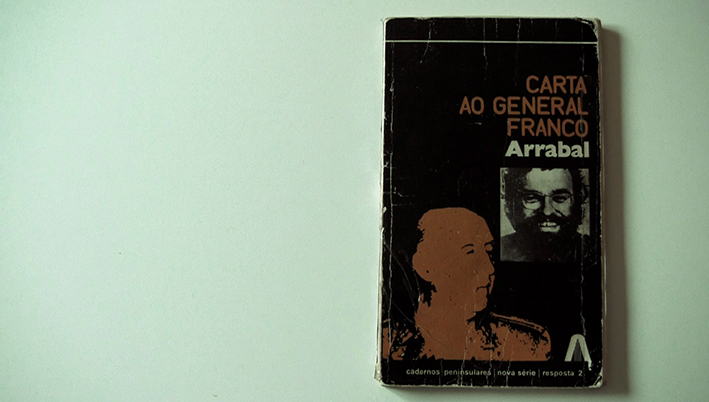 If a dictator is his own imagery and the dictatorship is the whole of images about it, those images should be destroyed to be able to construct our own future’s imagery. If there are ghosts that don’t belong to us but even so they scare us, we should face them and the ones who invoke them. This will let us breathe. The best way to solve a problem is by defining it. The name of my problem is Francisco Franco. Believe or not, I spend the whole day thinking about a dictator who died forty years ago. But, as in horror films, the wicked never die completely. For example, I think that I live in a country that deviated from its own path eighty years ago and still has not realised it. And I feel like that kind of characters in horror films who try to scream preventing of a danger, but whose voice has been stolen and nobody is able to hear him. If nothing has changed, who can ensure me that the times I’m living now are mine and no from anyone else? I started a comedy that has ended as a horror film.
If a dictator is his own imagery and the dictatorship is the whole of images about it, those images should be destroyed to be able to construct our own future’s imagery. If there are ghosts that don’t belong to us but even so they scare us, we should face them and the ones who invoke them. This will let us breathe. The best way to solve a problem is by defining it. The name of my problem is Francisco Franco. Believe or not, I spend the whole day thinking about a dictator who died forty years ago. But, as in horror films, the wicked never die completely. For example, I think that I live in a country that deviated from its own path eighty years ago and still has not realised it. And I feel like that kind of characters in horror films who try to scream preventing of a danger, but whose voice has been stolen and nobody is able to hear him. If nothing has changed, who can ensure me that the times I’m living now are mine and no from anyone else? I started a comedy that has ended as a horror film.
//////////////////////////////////////////////////////////////////////////////////////////
Todos los discursos del rey
Pablo Useros – España
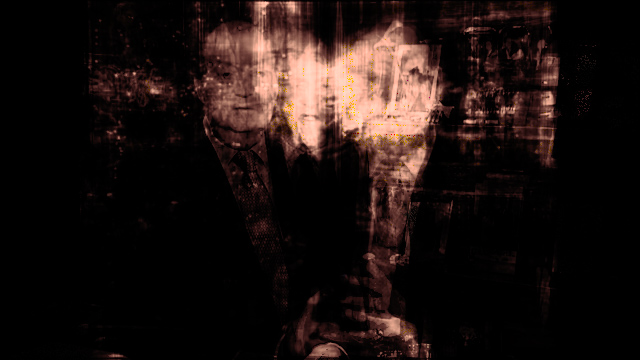 Durante su reinado, el Rey Juan Carlos I de España acudió puntualmente a la televisión pública para, con motivo de las fiestas de navidad, hacer un discurso cada 24 de diciembre. Año tras año, hasta 2013, meses antes de su abdicación. Este trabajo comprime a una sola capa y un solo canal sus 39 apariciones.
Durante su reinado, el Rey Juan Carlos I de España acudió puntualmente a la televisión pública para, con motivo de las fiestas de navidad, hacer un discurso cada 24 de diciembre. Año tras año, hasta 2013, meses antes de su abdicación. Este trabajo comprime a una sola capa y un solo canal sus 39 apariciones.
Capa a capa se suman y acumulan discursos, sonidos y encuadres, perdiendo todos su capacidad figurativa y creando un denso ruido abstracto que bien puede ser metáfora del largo reinado del monarca.
PABLO USEROS es artista visual. Sus proyectos de videoarte han sido proyectados en La Casa Encendida (Madrid), Filmadrid, Museo Bolit (Girona), International Director’s Lounge (Berlín), Prism (Sheffield), Performance Intermedia (Varsovia) o el IBAFF de Murcia. En 2014 crea el Master LAV dedicado al impulso de nuevos lenguajes en la creación audiovisual contemporánea.
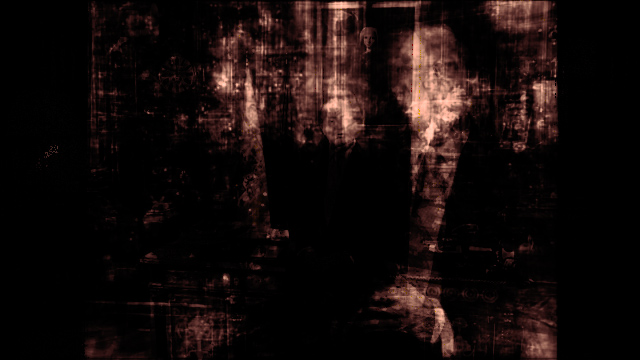 During his reign, King Juan Carlos I of Spain attended the public television due to the Christmas holidays to deliver a speech every 24th December. It happened year after year until 2013, some months before his abdication. This work condenses in only one layer and only one channel his 39 appearances.
During his reign, King Juan Carlos I of Spain attended the public television due to the Christmas holidays to deliver a speech every 24th December. It happened year after year until 2013, some months before his abdication. This work condenses in only one layer and only one channel his 39 appearances.
Speeches, sounds and frames are added and gathered layer by layer, losing all their figurative ability and creating a thick abstract noise that could be the metaphor of the king’s long reign.
//////////////////////////////////////////////////////////////////////////////////////////
Ciudad de los Reyes
Robinson Díaz – Perú
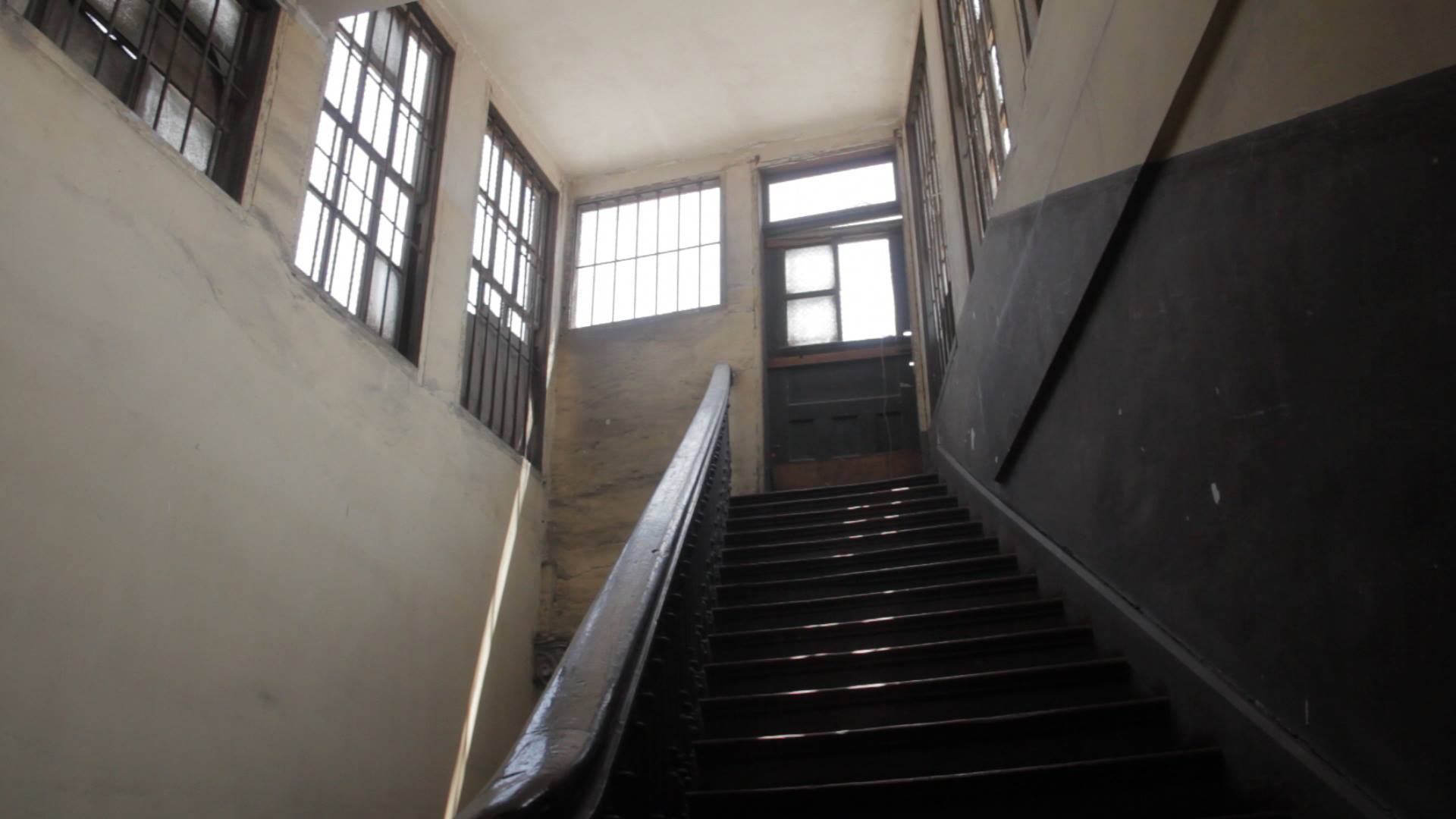 Las turbias aguas del río Rímac hacen olvidar, incluso a los más antiguos residentes, que Lima es un páramo desértico, donde al final la arena se impondrá y cubrirá con su manto todo vestigio de esplendor, a pesar de la resistencia de ciertos símbolos señoriales que han sabido resistir, hasta la fecha, los embates del tiempo y de la razón. Y en esta batalla, los restos de los caídos adornan los contornos de la ciudad como presagio del fin: Lima y su orgullo virreinal se tornará en un enorme osario antes de que el desierto la trague.
Las turbias aguas del río Rímac hacen olvidar, incluso a los más antiguos residentes, que Lima es un páramo desértico, donde al final la arena se impondrá y cubrirá con su manto todo vestigio de esplendor, a pesar de la resistencia de ciertos símbolos señoriales que han sabido resistir, hasta la fecha, los embates del tiempo y de la razón. Y en esta batalla, los restos de los caídos adornan los contornos de la ciudad como presagio del fin: Lima y su orgullo virreinal se tornará en un enorme osario antes de que el desierto la trague.
En el año de 1535 la ciudad de Lima fue fundada con el título de Ciudad de los reyes. Con más de 200 años de dominio, la influencia española aún es notoria en la ciudad, sobre todo en un sector de la clase dirigente, que mira con nostalgia el pasado colonial, donde se rendía pleitesía a un rey, como si fuese una arcadia. No obstante el tiempo ha hecho que retroceda esa absurda visión que pronto se tornará obsoleta.
ROBINSON DÍAZ SIFUENTES nació en Lima, Perú, en 1979. Empezó su carrera como asistente de dirección. En 2015 estrena su película A punto de despegar (realizada junto con Lorena Best), documental que ha recibido diversos reconocimientos, entre ellos la Mención especial del Jurado en el Festival internacional de Cine de Valdivia.
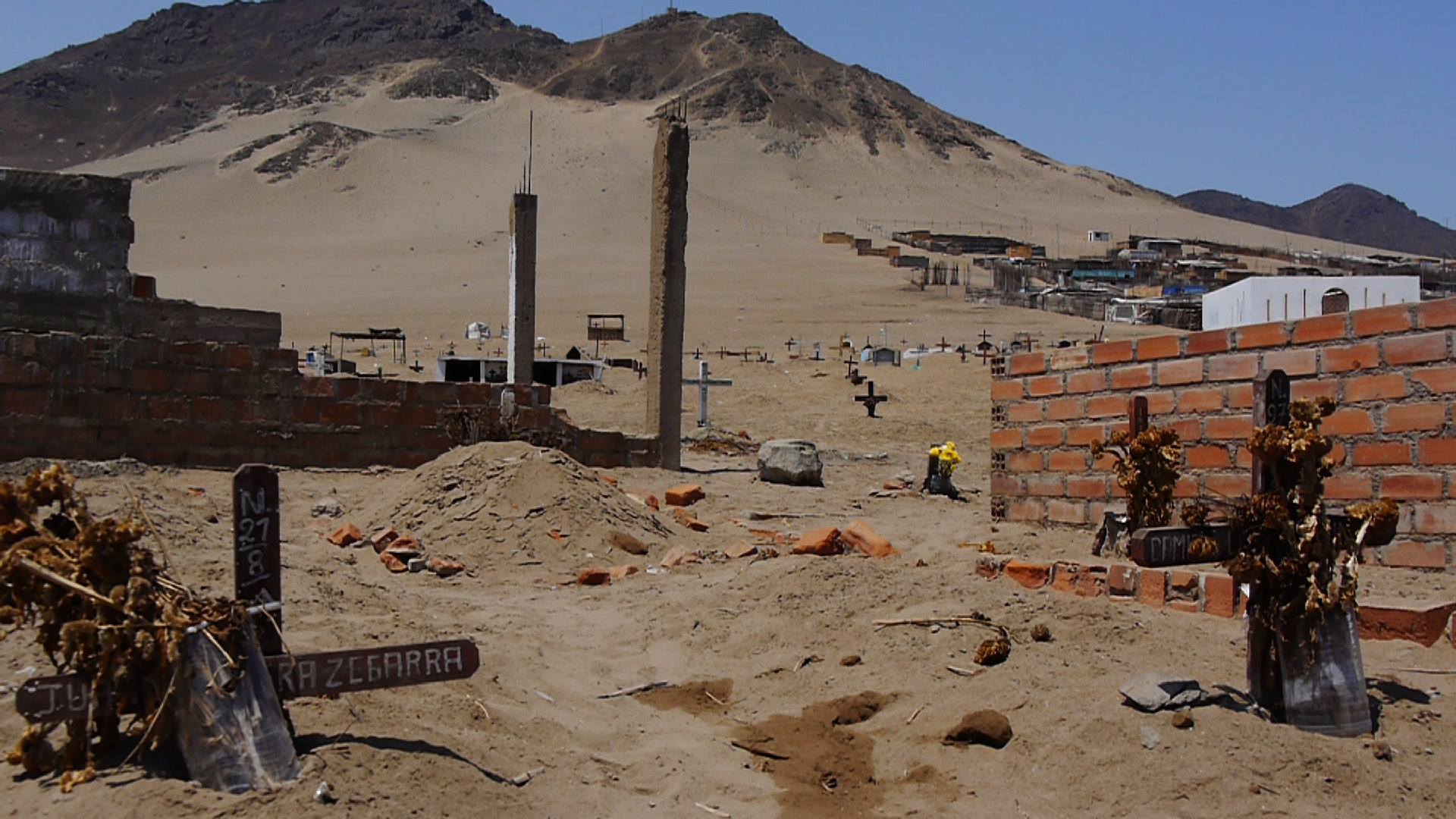 The troubled waters of Rimac river make even its oldest inhabitants forget that Lima is a desert-like moor, where the sand will ultimately prevail and cover every trace of splendour with its mantle, in spite of the resistance of certain feudal symbols that have managed so far to resist the attacks of time and reason. And in that battle, the remains of the fallen adorn the outline of the city, tolling the death knell: before being swallowed by the desert, Lima and its viceregal pride will become a vast ossuary.
The troubled waters of Rimac river make even its oldest inhabitants forget that Lima is a desert-like moor, where the sand will ultimately prevail and cover every trace of splendour with its mantle, in spite of the resistance of certain feudal symbols that have managed so far to resist the attacks of time and reason. And in that battle, the remains of the fallen adorn the outline of the city, tolling the death knell: before being swallowed by the desert, Lima and its viceregal pride will become a vast ossuary.
Lima was founded in 1535 as the City of Kings. With over 200 years of hegemony, the Spanish influence in the city is still conspicuous, mainly within the establishment, still looking back with nostalgia at a colonial past where a king was honoured, as though it were an arcadia. Nevertheless, time has helped to dismiss that absurd vision, which will soon become obsolete.
